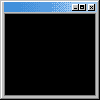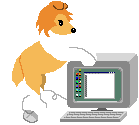What is a Computer Virus?
"A computer virus is a type of malware that, when executed, replicates itself by modifying other computer programs and inserting its own code into those programs. If this replication succeeds, the affected areas are then said to be "infected" with a computer virus, a metaphor derived from biological viruses.
Computer viruses generally require a host program. The virus writes its own code into the host program. When the program runs, the written virus program is executed first, causing infection and damage. By contrast, a computer worm does not need a host program, as it is an independent program or code chunk. Therefore, it is not restricted by the host program, but can run independently and actively carry out attacks."[1]
The terms 'malware' and 'computer virus' do go together, but they don't mean the exact same thing. Malware serves as a broad, umbrella term that encompasses any type of malicious software, such as computer viruses, ransomware, worms, etc. All viruses are malware, but not every malware is a virus, because some may remain on a single device without replicating. However, i'll be including other types of malware here since they're similar, and because it's just fun :3
0 1 1 0 1 0 0 1 0 1 1 0 1 1 0 0 0 1 1 0 1 1 1 1 0 1 1 1 0 1 1 0 0 1 1 0 0 1 0 1 0 1 1 1 1 0 0 1 0 1 0 0 1 1 1 1 0 1 1 1 0 1 0 1 0 1 1 0 1 0 0 1 0 1 1 0 1 1 0 0 0 1 0 0 1 1 1 1 0 1 1 1 0 1 1 0 0 1 1 0 0 1 0 1 0 1 1 1 1 0 0 1 0 1 1 0 1 1 1 1 0 1 1 1 0 1 0 1 0 1 1 0 1 0 0 1 0 1 1 0 1 1 0 0 0 1 1 0 1 1 1 1 0 1 1 1 0 1 1 0 0 1 1 0 0 1 0 1 0 1 1 1 1 0 0 1 0 1 0 0 1 1 1 1 0 1 1 1 0 1 0 1 0 1 1 0 1 0 0 1 0 1 1 0 1 1 0 0 0 1 0 0 1 1 1 1 0 1 1 1 0 1 1 0 0 1 1 0 0 1 0 1 0 1 1 1 1 0 0 1 0 1 0 0 1 1 1 1 0 1 1 1 0 1 0 1 0 1 1 0 1 0 0 1 0 1 1 0 1 1 0 0 0 1 1 0 1 1 1 1 0 1 1 1 0 1 1 0 0 1 1 0 0 1 0 1 0 1 1 1 1 0 0 1 0 1 1 0 1 1 1 1 0 1 1 1 0 1 0 1 0 1 1 0 1 0 0 1 0 1 1 0 1 1 0 0 0 1 0 0 1 1 1 1 0 1 1 1 0 1 1 0 0 1 1 0 0 1 0 1 0 1 1 1 1 0 0 1 0 1 1 0 1 1 1 1 0 1 1 1 0 1 0 1 0 1 1 0 1 0 0 1 0 1 1 0 1 1 0 0 0 1 0 0 1 1 1 1 0 1 1 1 0 1 1 0 0 1 1 0 0 1 0 1 0 1 1 1 1 0 0 1 0 1 0 0 1 1 1 1 0 1 1 1 0 1 0 1 0 1 1 0 1 0 0 1 0 1 1 0 1 1 0 0 0 1 0 0 1 1 1 1 0 1 1 1 0 1 1 0 0 1 1






















































